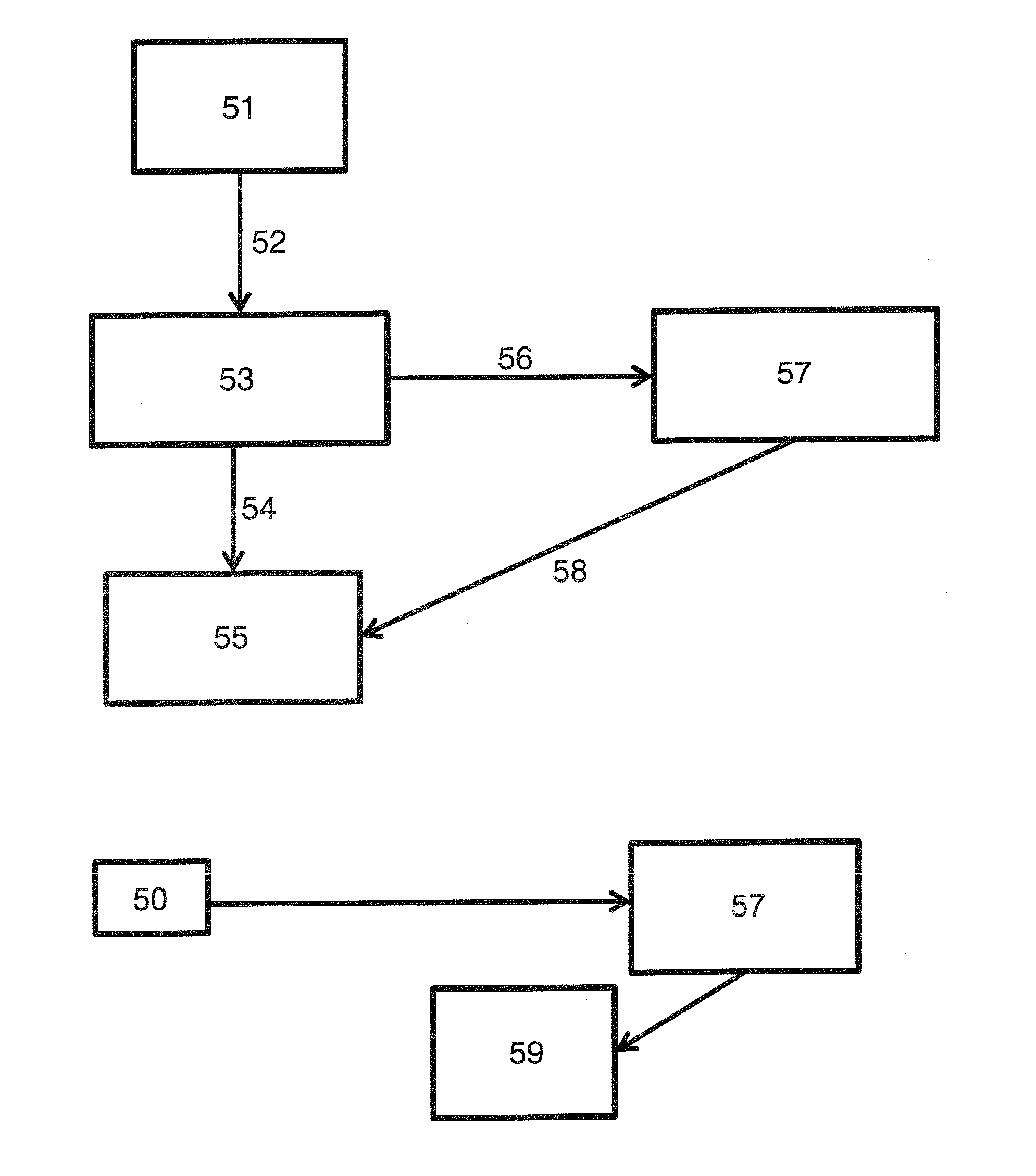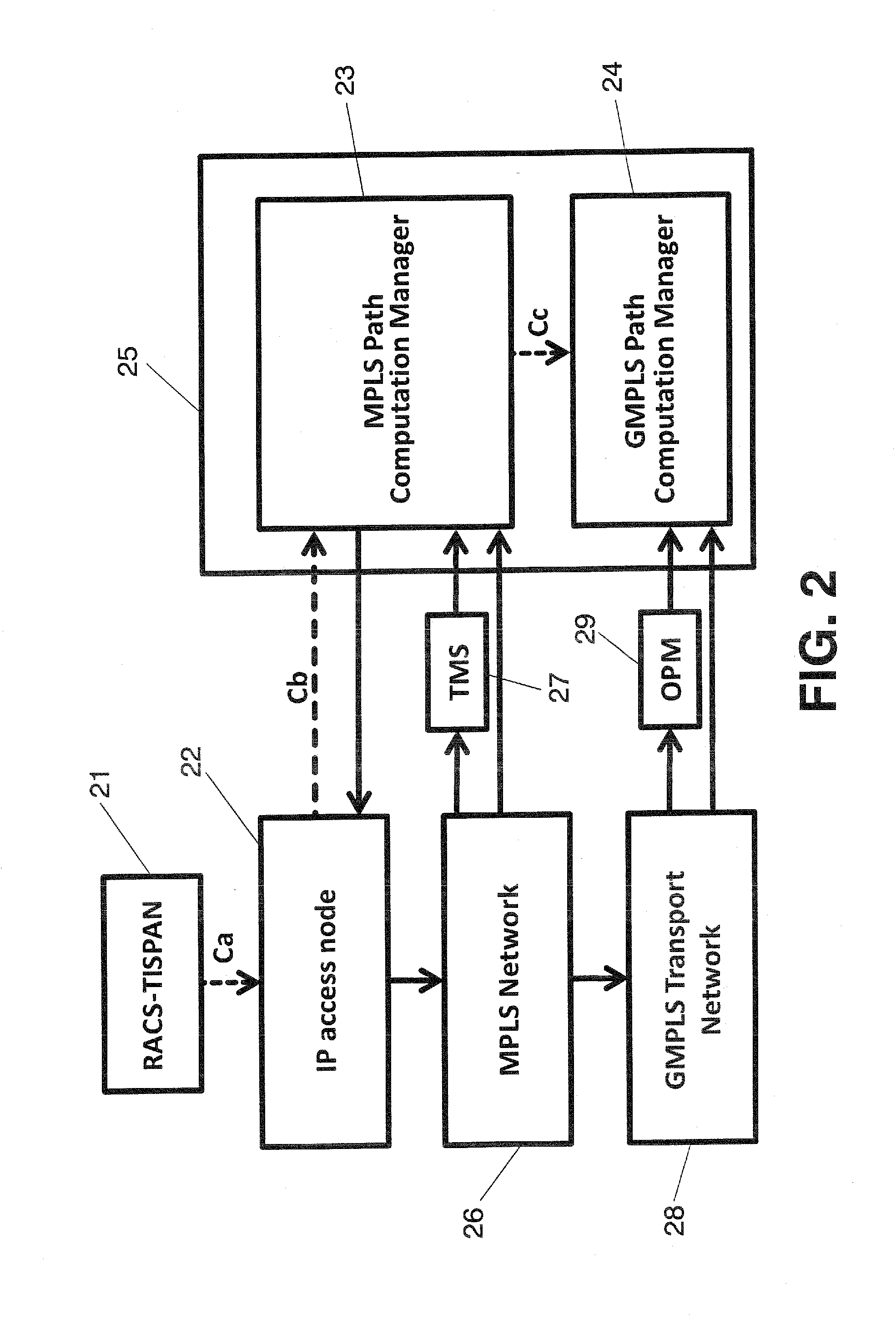Method for network resources allocation in tispan based service architectures
a technology of service architecture and network resources, applied in transmission systems, instruments, transmission systems, etc., can solve problems such as scalability problems in terms of processing power and cost, scalability problems that might arise for increased traffic demands, and current model that doesn't apply to other metro and core network models based on other transportation, so as to reduce or eliminate the deficiencies of current tools
- Summary
- Abstract
- Description
- Claims
- Application Information
AI Technical Summary
Benefits of technology
Problems solved by technology
Method used
Image
Examples
Embodiment Construction
[0038]The proposed invention defines a communication procedure between TISPAN service layer architectures and multilayer GMPLS network architectures as sub-wavelength or WSON for example.
[0039]The proposed procedure is explained below:
[0040]1.—TISPAN RACS generates packet flow connectivity requests per individual user service (voice, video, data, etc) with QoS requirements (which will depend of the service required).
[0041]2.—Individual service request with similar destination and QoS requirements are allocated in a single packet based MPLS tunnel (e.g MPLS-TP or OBS). MPLS tunnels are classified according to different classes of service.
[0042]3.—Traffic characteristics of each MPLS tunnel are monitored in order to assure that they are fulfilling the QoS requirements defined for each class of service (see Table 1).
[0043]4.—When traffic volume of a given class of service between two network nodes (i.e. in a certain MPLS tunnel) is above a certain capacity threshold then the packet bas...
PUM
 Login to View More
Login to View More Abstract
Description
Claims
Application Information
 Login to View More
Login to View More - R&D
- Intellectual Property
- Life Sciences
- Materials
- Tech Scout
- Unparalleled Data Quality
- Higher Quality Content
- 60% Fewer Hallucinations
Browse by: Latest US Patents, China's latest patents, Technical Efficacy Thesaurus, Application Domain, Technology Topic, Popular Technical Reports.
© 2025 PatSnap. All rights reserved.Legal|Privacy policy|Modern Slavery Act Transparency Statement|Sitemap|About US| Contact US: help@patsnap.com



